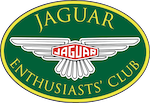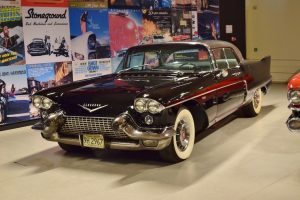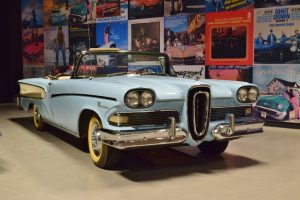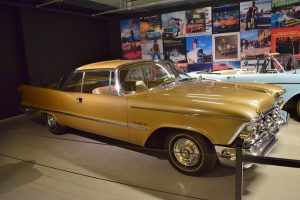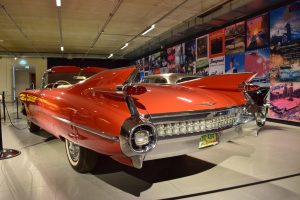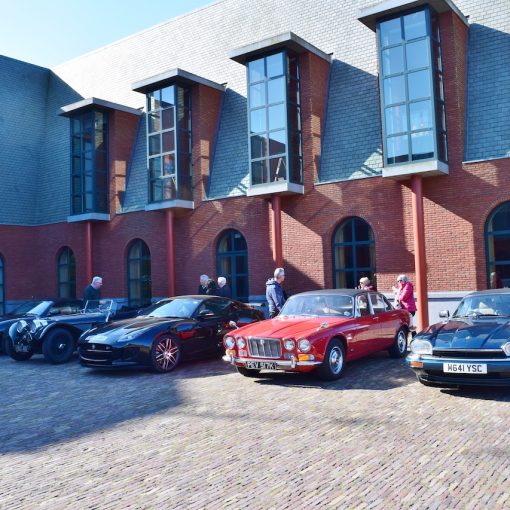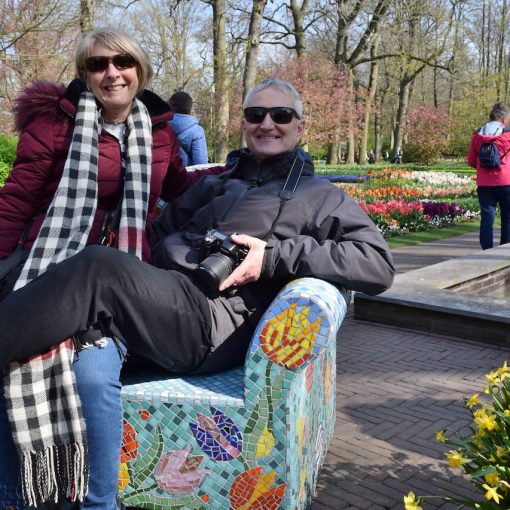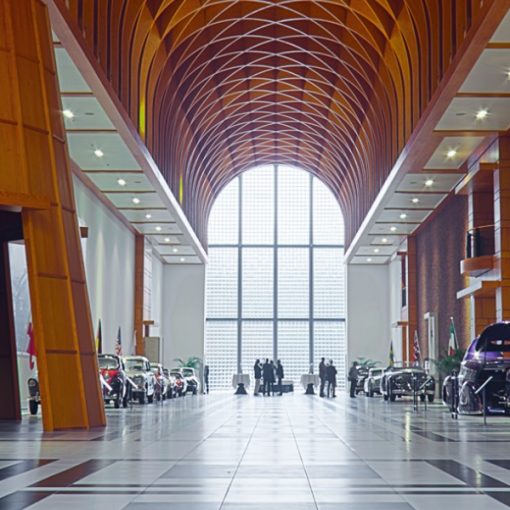Lunch over and, before we revel in the delights of the luxury, sporting and downright ostentatious exhibits, let’s take a look at some of the collection’s more off-the-wall offerings.
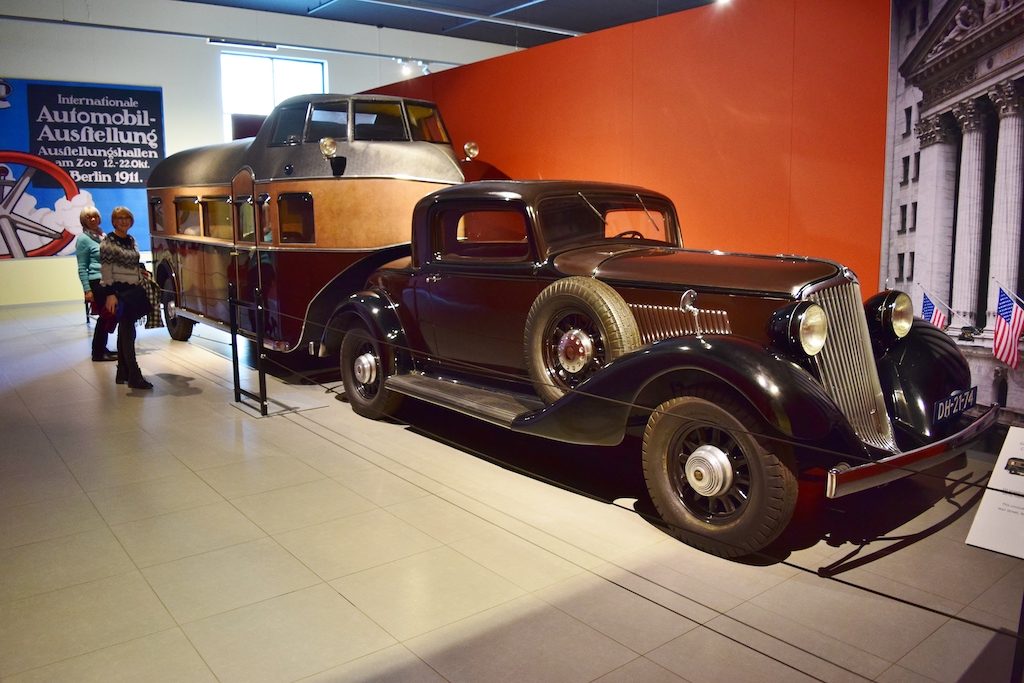
First in the queue is the 1932 Blue Streak Coupe and Curtiss Aerocar Land Yacht. American banker, Hugh McDonald, used this daily to commute from Long Island to his office in New York. Basically, it is a semi-trailer often seen in the States now, which looks like a plane of the period and was, in fact, built by the Curtiss Aeroplane Company.
The Brits too were not short of crazy transport ideas. While Daimler maintained its long-established position as royalty’s favourite in the immediate post-WW2 years, they grabbed headlines in the popular press thanks to a succession of often outrageous ‘Docker Specials’ featuring bodies by in-house coachbuilder Hooper & Co.

The driving force behind these sensational styling exercises – all the more remarkable for their appearance at a time of great austerity – was Lady Docker (née Norah Turner), a former dance club hostess and wife of the parent BSA Group’s millionaire chairman, Sir Bernard Docker. Lady Docker had been appointed a director of Hoopers with special responsibility for styling matters and set about transforming Daimler’s staid image into something altogether more exciting.
Lady Docker commenced with the spectacular ‘Golden Daimler’, which amazed crowds at the 1951 Motor Show, and produced a new sensation each year culminating with the Daimler ‘Golden Zebra Coupe’ shown here. Based on a Daimler 4.6-litre six-cylinder DK400 limousine chassis, and built for the 1955 Earls Court Motor Show, this oddity was fitted with an ivory dashboard, ivory make-up utensils, picnic basket, leather luggage, gold-plated trim and real zebra hide upholstery plus, of course, a cocktail cabinet – all topped out by a golden zebra radiator mascot. All in the best possible taste.
Beat that!
But that’s exactly what Scotsman Robert Matthewson had done during his stay in Calcutta around 1910, with his Swan car built on a Brooke 25/30 HP chassis.
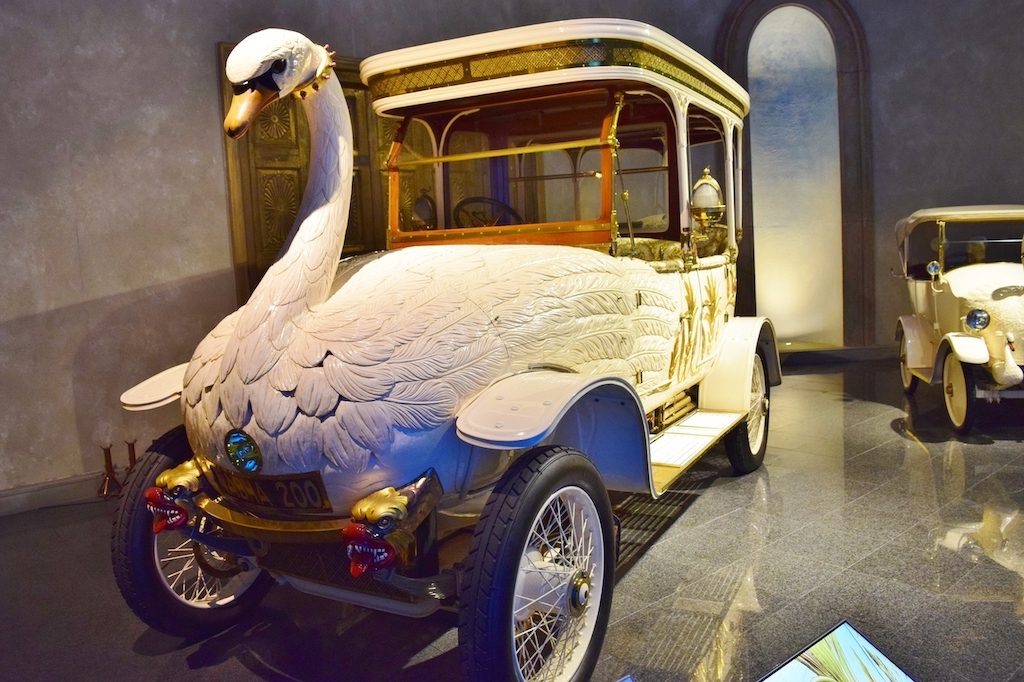
This bizarre offering featured light bulbs in the swan’s eyes, an exhaust-driven eight-tone horn operated from a keypad in the rear of the car, a ship’s telegraph to the chauffeur and fitted brushes to sweep off the elephant dung from the tyres. Steam came from the swan’s beak to clear a way through the crowds and, to top everything, it ejected whitewash paint from its rear to emulate that which comes to swans naturally. Believe it or not, a smaller version was manufactured, not surprisingly called, the Cygnet.
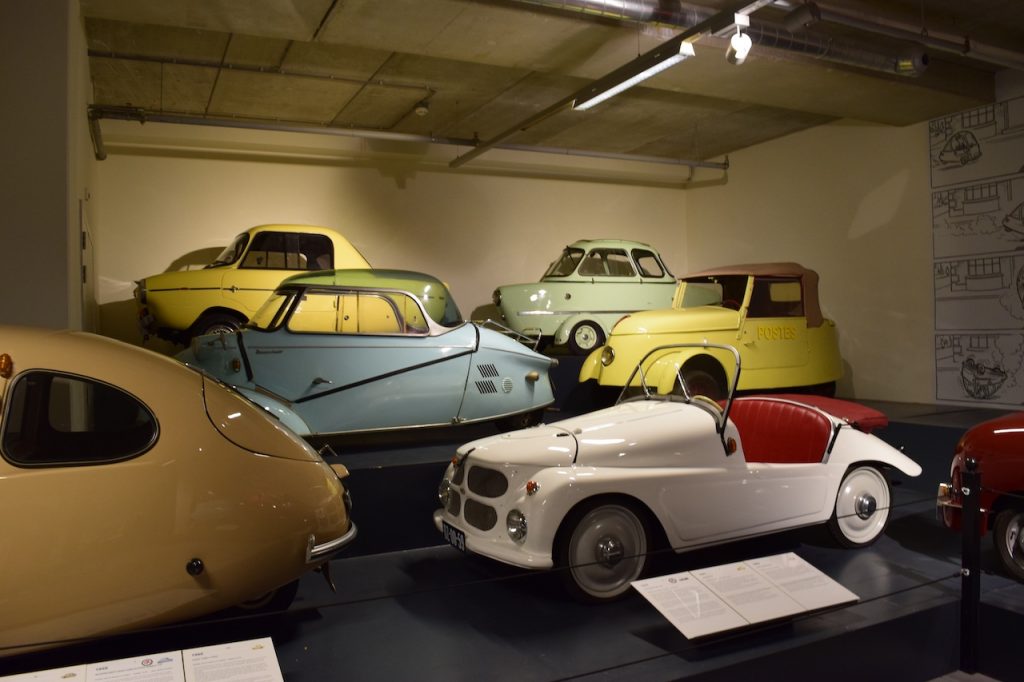
We move on to the Bubble Car section, where such familiar machines as Iso Isetta and Messerschmitt KR200 are on show. There lurk oddities such as a 1951 Rovin D4 roadster, a ’55 Inter Cabin Scooter and others. I haven’t a clue what the bug-eyed yellow machine with “Postes” written on the doors is; a motorised French letter box perhaps? [Editor’s note: the Louwman Museum describes it as a 1941 Peugeot VLV]
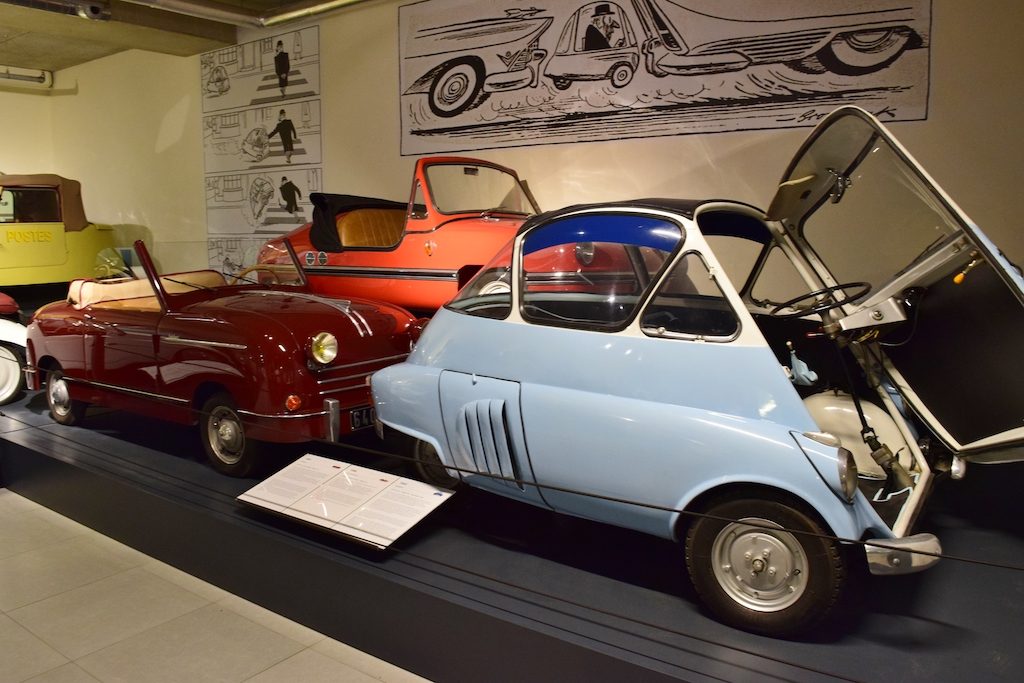
We now reach a little bit of militaria, generally centered around WW2.
 A Beetle look-alike of 1935 vintage by Mercedes Benz looked worth a second glance. Rear-engined, it was designed by Ferdinand Porsche, as was its neighbour, a 1951 VW Beetle. Neither took part in the war, although some of their engineering did, but at least the Willys Jeep along-side did great service. (For purists, it could have been a Ford, but I couldn’t see the rear.)
A Beetle look-alike of 1935 vintage by Mercedes Benz looked worth a second glance. Rear-engined, it was designed by Ferdinand Porsche, as was its neighbour, a 1951 VW Beetle. Neither took part in the war, although some of their engineering did, but at least the Willys Jeep along-side did great service. (For purists, it could have been a Ford, but I couldn’t see the rear.)
The real interest here is the 1946 Rapid Swiss Volkswagen. A charming little single cylinder 2-seater designed by a German engineer – Josef Ganz. He made a prototype of this car in the 1920s called “The May Beetle” with an almost identical chassis and suspension detail as the later VW Beetle. 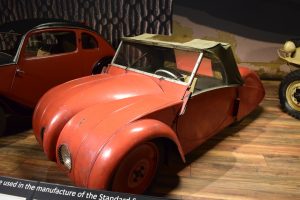
Unfortunately for poor Josef, he was the wrong religion in the wrong place at the wrong time and was subsequently banned from working in 1933. At that time Ferdinand Porsche was ordered to design a people’s car for the German public and came up with or plagiarised some of Ganz’s ideas. The rest is history.
Ganz escaped to Switzerland in 1934, but that’s another story.
Moving on a couple of decades, we can see a small collection of mainly large American automobiles. Each has a story to tell from Ford’s spectacular failure, the 1958 Edsel Pacer Convertible (blame their marketing department), past a duo of enormous Cadillacs: a 1958 Series 70 Fleetwood Eldorado Brougham (a favourite of mine) and a Series 62 Convertible bristling with jet-age design cues which was surely Harley Earl’s greatest fin job. We then pass a Chrysler Imperial Crown Sedan, sporting Virgil Exner’s “Forward Look”, to a trio of older, but no less worthy, designs.
The 1948 Hudson Commodore’s “step down” construction enabled a lower floor and lower centre of
gravity, resulting in improved road holding. Parked next to it was a Studebaker Starlight Coupe from 1950, with its aviation-inspired styling by Parisian, Raymond Loewy. Loewy’s CV included the Coca Cola bottle restyle, the Lucky Strike logo, the Frigidair refrigerator, Concorde’s interior, several other Studebakers and … the 1950s Hillman Minx.
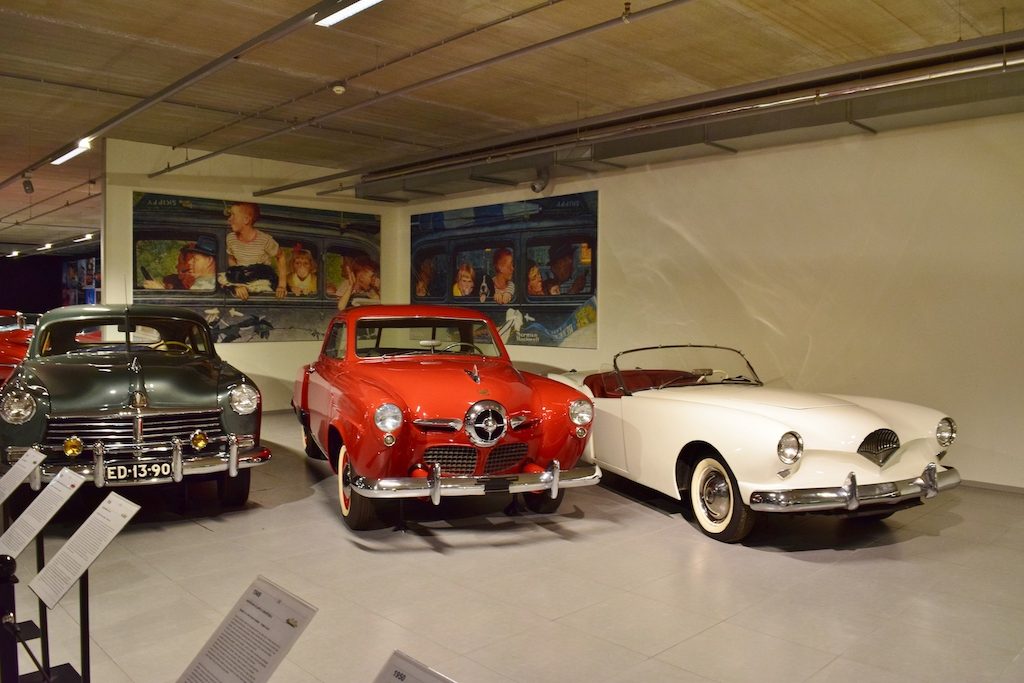
The weirdest of the trio turned out to be the white fibreglass Kaiser-Darrin, a low volume effort with curious doors. Instead of opening outwards, they slid forwards into the front wings. A good feature if you are in a tight spot. The trouble was that the wings were not long enough leaving the open door partly obstructing the opening making access and egress best left to a contortionist. Only 435 left the factory before production ended in 1954.
My deadline is due, so we will see you next month with more unusual motors.
Neil Shanley
